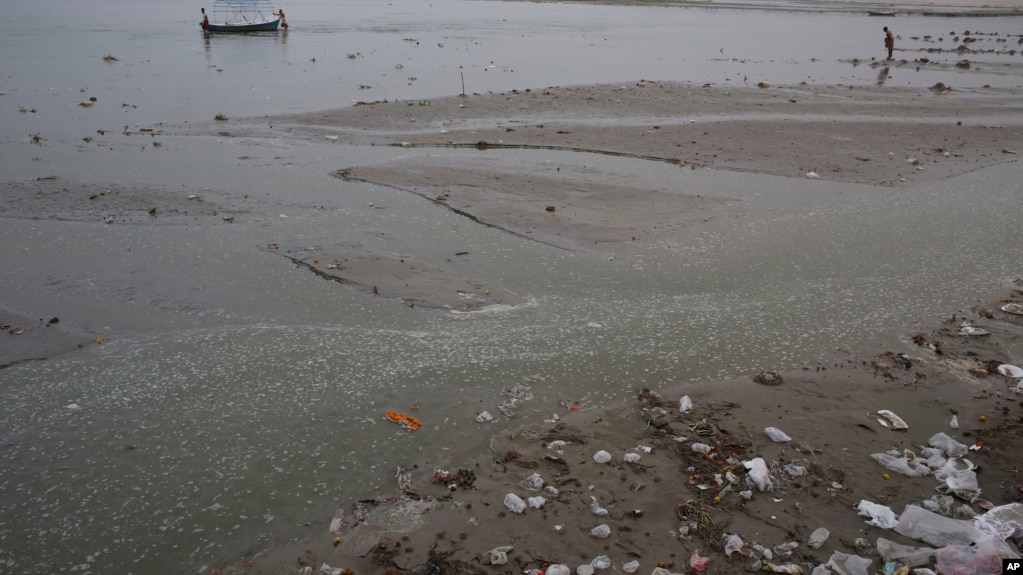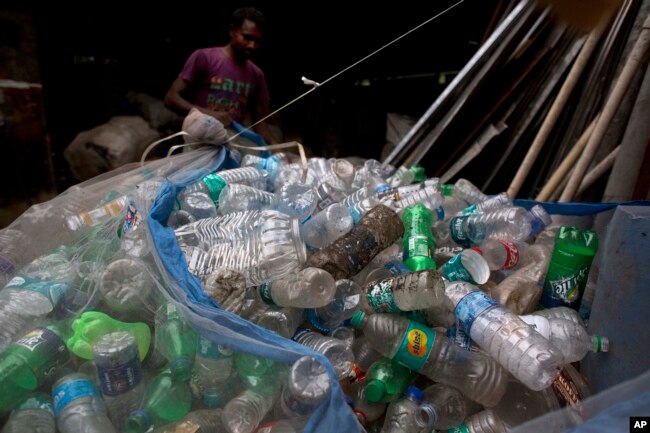No surprise here as we find ways to cut waste and over consumption.
Pollution Slowly Killing Planet's Ocean
Margaret Besheer
UNITED NATIONS — The remote South Pacific island of Henderson hit the headlines recently not for its pristine natural beauty, but for the 38 million tons of accumulated plastic and other debris that ocean currents had landed on its shores.
The uninhabited island is a UNESCO heritage site and one of the world's biggest marine reserves. It is also a victim of the pollution that is slowly killing our oceans.
“Conserving our oceans and using them sustainably is preserving life itself," declared U.N. Secretary-General António Guterres at the opening Monday of a week-long Ocean Conference at the United Nations.
That is not an understatement. The ocean provides nearly half of the oxygen produced on Earth and its marine bounty feeds billions.
Some 4,000 leaders from the worlds of politics, science, academia, business and civil society have gathered for the conference, which kicked off on World Environment Day.
They hope to draw attention to the effects of pollution, plastics, climate change, over-fishing and other factors that are affecting all marine life, with potentially disastrous consequences.
Plastics: A Top Offender
“Marine plastic debris is a slow motion catastrophe waiting to happen,” warned Indonesia's Maritime minister Luhut Binsar Pandjaitan.
Plastics and microplastics plastic particles under 5mm in diameter are among the biggest threats to the ocean and marine life. A World Economic Forum study warns that by 2050 the oceans could contain more plastics than fish.
The ocean is overflowing with manmade items, including water bottles, plastic shopping bags, cigarette butts, and larger items from fishing nets to sunken vessels. It all presents a danger to marine life through entanglement, ingestion or leakage of harmful chemicals.
“The ultimate way to keep marine debris from becoming a threat is by preventing it from entering the ocean in the first place," said Nancy Wallace, Director of the Marine Debris Program at the National Oceanic and Atmospheric Administration (NOAA) for the United States. "Changing behaviors is a particularly important aspect of prevention," she added.
That includes getting the public to cut back or eliminate its use of plastic shopping bags, cutlery and bottled beverages.
In the Pacific, where the ocean covers 90 percent of the region and land is only two percent, leaders are striving for cleaner seas by 2025.
Kosi Latu of the Secretariat of the Pacific Regional Environment Program said his group did a recent study that examined 215 species of marine life. They found 136 types had ingested plastic, and in fish, the figure was 97 percent.
"That gives you a sense of how big this problem is," Latu said. He noted that in the Pacific the rate is about 30 percent higher than the global average of about 67 percent.
“The challenge is implementing, enforcing policies; it is enforcing legislation,” Latu said.
He said his region is also looking at innovative policies, not just banning plastics. “But looking at policies that will put the onus on those who produce the plastics, so making sure there is some way they contribute to the solution.”
Call to Action
This week, conference attendees will discuss a range of other problems confronting the oceans. On Friday, they will formally adopt a Call to Action. So far, they have more than 700 voluntary commitments to improve the health of the ocean, and they are growing.
The commitments include agreeing to implement long-term strategies to reduce the use of plastics and microplastics, as well as to develop and implement mitigation measures to help the ocean recover from other harmful impacts, such as climate change.
The uninhabited island is a UNESCO heritage site and one of the world's biggest marine reserves. It is also a victim of the pollution that is slowly killing our oceans.
“Conserving our oceans and using them sustainably is preserving life itself," declared U.N. Secretary-General António Guterres at the opening Monday of a week-long Ocean Conference at the United Nations.
That is not an understatement. The ocean provides nearly half of the oxygen produced on Earth and its marine bounty feeds billions.
Some 4,000 leaders from the worlds of politics, science, academia, business and civil society have gathered for the conference, which kicked off on World Environment Day.
They hope to draw attention to the effects of pollution, plastics, climate change, over-fishing and other factors that are affecting all marine life, with potentially disastrous consequences.
Plastics: A Top Offender
“Marine plastic debris is a slow motion catastrophe waiting to happen,” warned Indonesia's Maritime minister Luhut Binsar Pandjaitan.
Plastics and microplastics plastic particles under 5mm in diameter are among the biggest threats to the ocean and marine life. A World Economic Forum study warns that by 2050 the oceans could contain more plastics than fish.
The ocean is overflowing with manmade items, including water bottles, plastic shopping bags, cigarette butts, and larger items from fishing nets to sunken vessels. It all presents a danger to marine life through entanglement, ingestion or leakage of harmful chemicals.
“The ultimate way to keep marine debris from becoming a threat is by preventing it from entering the ocean in the first place," said Nancy Wallace, Director of the Marine Debris Program at the National Oceanic and Atmospheric Administration (NOAA) for the United States. "Changing behaviors is a particularly important aspect of prevention," she added.
That includes getting the public to cut back or eliminate its use of plastic shopping bags, cutlery and bottled beverages.
In the Pacific, where the ocean covers 90 percent of the region and land is only two percent, leaders are striving for cleaner seas by 2025.
Kosi Latu of the Secretariat of the Pacific Regional Environment Program said his group did a recent study that examined 215 species of marine life. They found 136 types had ingested plastic, and in fish, the figure was 97 percent.
"That gives you a sense of how big this problem is," Latu said. He noted that in the Pacific the rate is about 30 percent higher than the global average of about 67 percent.
“The challenge is implementing, enforcing policies; it is enforcing legislation,” Latu said.
He said his region is also looking at innovative policies, not just banning plastics. “But looking at policies that will put the onus on those who produce the plastics, so making sure there is some way they contribute to the solution.”
Call to Action
This week, conference attendees will discuss a range of other problems confronting the oceans. On Friday, they will formally adopt a Call to Action. So far, they have more than 700 voluntary commitments to improve the health of the ocean, and they are growing.
The commitments include agreeing to implement long-term strategies to reduce the use of plastics and microplastics, as well as to develop and implement mitigation measures to help the ocean recover from other harmful impacts, such as climate change.



No comments:
Post a Comment